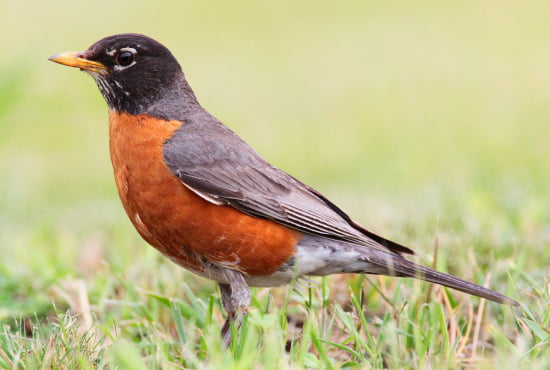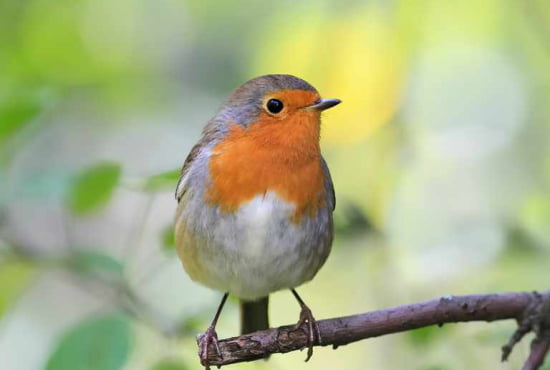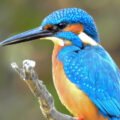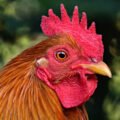Robin - The Migratory Bird
The Robin (Latin name Turdus migratorius) is a small insectivorous passerine bird that was formerly classed as a member of the thrush family (Turdidae) but is now considered an Old-World flycatcher (Muscicapidae). Its many subspecies have a widespread distribution throughout Europe, Asia, and North America. The Robin lives in trees and builds its nest on branches or in hedges. It feeds on insects it picks from the foliage or ground, often hanging upside down like many other flycatchers.
A small bird of northern hemisphere woodland habitats, with a red breast and prominent black face and throat. Its thin sharp bill is adapted to eating small invertebrates, insects, seeds, and berries. Males are brightly colored in summer, especially on their faces. Their plumage becomes duller in winter which may lead to them being mistaken for Sparrows at that time of year.

Robin Habitat
Where do robins live? Robins are found throughout North America, with a particularly dense population in Europe. These small birds live year-round in deciduous forests and will settle down in parks, gardens, and woodlands that contain plenty of vegetation. They require nesting space beneath taller trees, such as maples or oaks—trees that provide food for both adults and babies during springtime.
When it’s a breeding season (generally March to July), these birds can be seen near bodies of water or open fields where they hunt for worms and other insects. This Robin is an exceptionally hardy species, allowing them to adapt well when humans inhabit their natural habitat: suburban areas. Here, Robins prefer weedy yards and parkland.
There may also be roadkill left behind by careless drivers; rodents who’ve been killed on busy streets often make up a good portion of their diet. In winter months, or even when food is scarce at home, Robins will migrate south into Mexico and along the Pacific coastlines of North America. This species isn’t considered threatened or endangered because its numbers are generally high across all regions where it lives: it’s estimated there are anywhere from 75 million to 300 million robins out there!

Physical Characteristics
10–12 in (25–30 cm), Wingspan: 13.5 in (34 cm), Weight: 2.3-3 oz (65-85 g) Robin Colours: Redbreast, white belly, grey back, and wings; brown patch on the crown and short crest Robin Habitat: Found across North America; breeds in temperate regions of Europe, Asia, and Alaska Robin Diet: Worms, insects and their larvae that they find on or under tree bark or rotting logs Robin Facts & Information: Many people claim that a robin brings good luck to those who see one first thing in spring.
Robins are songbirds and one of their most noticeable
characteristics is their fondness for singing. Many people who live in areas
that robins inhabit say that they can tell what season it is based on how much
singing is heard during a certain time of year. Robins are social birds and
often flock together during migrations and mating season. They also bond with
other species and have been known to bond with cats or even humans! Although
robins aren’t necessarily territorial, males will often defend a small
territory around their nests if they find an appropriate nesting place.

Incredible Facts
Robins prefer to roost on thick branches, avoiding thinner or overhanging ones.
They do not use undergrowth or dense bushes for roosting, even in urban areas.
Densely growing thorny shrubs are also avoided as their feathers become damaged by thorns and spines.
During cold winter nights, robins often huddle together to conserve heat by tucking their beaks beneath one another’s wings.
Nestlings generate more body heat when warm feathers touch; a third bird is sometimes added to form a tighter huddle of three birds that press against each other until all fall asleep.
In colder climates, they will sometimes shelter in barns or other buildings when temperatures drop precipitously overnight.
For decades it was speculated that robins feasted on berries and were thus attracted to berry patches, but it was only during World War II that studies conclusively showed they ate insects almost exclusively.

